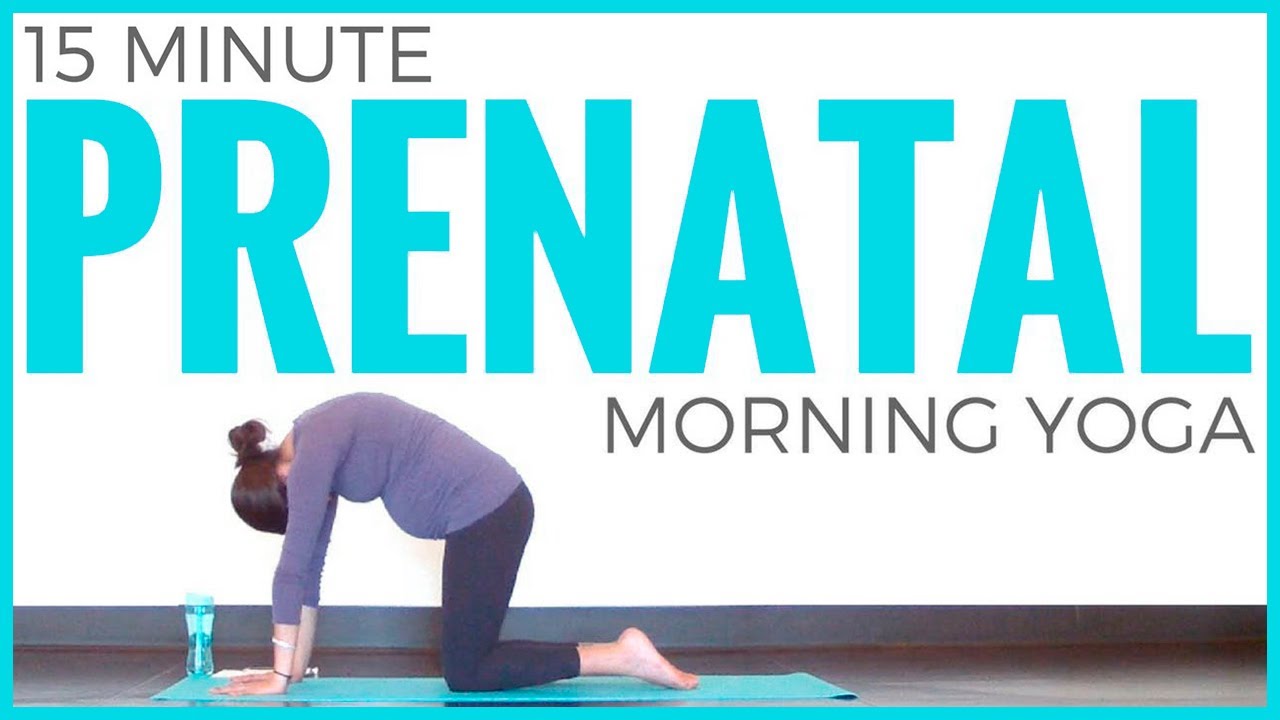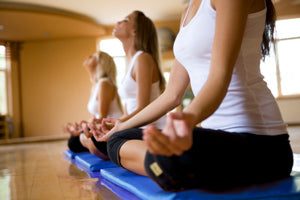
Sanskrit's word for "unite or join" is where yoga comes from. This union refers to a union of mind and body, and to the individual consciousness with universal consciousness. Yoga was popularized in India during the first centuries of the 20th Century. Lord Shiva was the first known Yogi. He disseminated it via his writings. These books were later translated into many languages, and spread throughout the globe.
Yoga began to gain popularity in Europe as a popular practice. In the early 1900s VHS tapes and DVDs were popularized, which led to widespread distribution of yoga videos. The booming fitness industry and the Internet made yoga popular in the United States, and the spread of the practice was fast and widespread. The transatlantic flight and invention of the microphone made it possible to reach large audiences.
Yoga dates back thousands of year. It was practiced for spiritual purposes, but it only came to the attention of Westerners during the mid-19th century. Swami Vivekananda was an Indian monk who traveled throughout Europe and the U.S. in order to spread the practice. He later taught yoga in the West, where it was popularized in modern times. This is an excellent way to learn about the history of yoga.

The origins of yoga can be traced back as far back as ancient times to northern India. The Vedas, one of the oldest vedas, includes references to the practice. The Rig Veda contains over one thousand hymns and 200 mantras. The Rig Veda was used by priests of the Vedic age to learn about the different positions and postures of yoga. Many Rishis refined the practice in later centuries and brought the modern version to life. The Upanishads offer great insight into the history and practice of yoga.
Yoga history started with ancient Indian yoga being mentioned. The practice evolved to include asanas or physical postures. Hatha yoga became popular in the U.S. in the 1900s. Many teachers added asanas into their classes. The 1970s saw the practice become mainstream and accepted all over the globe. Yoga's popularity and spread was fueled by its birth in the United States.
Yoga has a complicated history. Its roots date back to 2000 BC, when the practice was primarily focused on the mind. The first Hatha yoga classes were then developed. In the 1920s, Hatha yoga was developed. This form of yoga is more body-centered. Today, asanas serve as a tool for achieving this goal.
The history of yoga has deep roots in ancient India. The practice of yoga in ancient India was quite different from Vinyasa classes today. The history of yoga will help you to appreciate and understand it better. Ancient yoga, for example, was not practiced the same as modern-day Yoga. The origins of Yoga can be traced back thousands of years and help you develop a deeper appreciation of the practice.

There is a rich history of yogic practices in yoga's history. While the Hindu culture was predominant among ancient yogis, it had a strong influence on them. Yoga was mostly banned in the West by the British. Only after that, yoga was allowed to spread across Europe and the United States. In the latter 1800s, yoga was introduced to the United States from India by gurus. Asana is a form of meditation.
Asana is the base of all yoga practices. Asana is an ancient practice. Yoga was spiritual and religious in the 5th century. Jainism, Buddhism, and Jainism were also present in the ancients. The Classical Period witnessed the first systematic presentation and explanation of yoga practices and beliefs in Hinduism or Jainism. The popularity and influence of yoga grew over the centuries. But as with any new practice, the roots of it are still rooted in the same principles and ideals.
FAQ
Which dietary supplements are good for weight loss.
It is important to exercise and eat right in order to lose weight. Some people find that supplements can help them along the journey.
Research suggests that omega-3 fats may aid in weight loss. Omega-3s, essential fats, are critical for brain function and cell membrane health. They're found in seafood like salmon, tuna, shrimp, and cod liver oil.
Other research suggests that green tea might be beneficial for weight loss. Green tea contains catechins, antioxidants that may help boost metabolic rate and encourage weight loss.
Is Cardio Better Than Strength Training?
Both are equally great. If you want to increase muscle mass faster, cardio is the better option.
Cardio burns more calories per minute than strength training and burns more fat.
Strength training is a great way to build muscle mass. However, it takes more effort than cardio.
What is the best way to lose weight?
Losing weight is easier said than done. Many people give up because they don’t know what else to do.
To lose that extra weight, however, there are simple steps you could take.
First, ensure that you consume fewer calories per day than you burn. If you eat more calories that you burn, you'll gain weight.
For all of those extra calories to be burned, it is important that you exercise regularly. There are many types of exercise you can do, such as walking, running, cycling, and dancing.
Third, you must stop smoking cigarettes and drinking alcohol. These habits will cause you more calories than normal.
Fourth, it is important to reduce the consumption of junk food and fatty foods. These can be replaced with healthier options like fruits, vegetables and whole grains.
Fifth, it is important to make lifestyle changes and develop new habits. You might need to get up earlier every morning to do some exercise before going to work.
Sixth: You must be disciplined, and you must follow your diet plan.
To burn extra calories, you can also join a gym or take an aerobics class.
You will quickly notice the difference by following these simple tips.
What does milk do to men?
Next time you buy milk think about what you could do with it. You may also benefit from consuming less coffee.
Both children and adults have been shown to benefit from milk. The nutrients in milk include vitamin D, calcium potassium, phosphorous and magnesium.
It also aids digestion, improves bone strength, and promotes weight gain. Milk products can help adults have better immunity systems and less illness.
People who have difficulty digesting milk are also likely to be able to enjoy its many benefits, even if they do not have stomach problems.
Drink more milk than soda and juice. You can strengthen your teeth with the extra calcium and vitaminD found in milk.
If you don't like the taste of milk, you can always make your yogurt using plain low-fat milk. Yogurt is a great alternative to milk since it is lower in calories and higher in protein.
Yogurt also has probiotics that aid digestion and increase immunity.
If you're having trouble sleeping, try taking a glass of warm milk before bedtime. Warm milk helps relax muscles and boosts serotonin levels.
Statistics
- The PRS enabled risk stratification for overall prostate cancer and lethal disease with a four-fold difference between men in the highest and lowest quartiles (HR, 4.32; 95% confidence interval [CI], 3.16-5.89). (pubmed.ncbi.nlm.nih.gov)
- Get free shipping and 25% off today. (healthline.com)
- 10 pounds in a month is likely during a lean bulking phase, especially for beginners. (muscleandstrength.com)
- Candidates and applicants must pass all four tests at 70% (minimum level) to graduate from Basic Deputy U.S. Marshal (BDUSM) Training. (usmarshals.gov)
- Are You One of the 20% of Guys (mh.co.za)
External Links
How To
How can I burn fat and exercise?
Exercise reduces calories by increasing metabolism, and oxygen consumption.
At moderate intensity, you will lose weight easily.
These tips will help you burn fat and keep fit while exercising.
-
Cardio exercises like walking, running (or jogging), swimming, cycling, running, and/or elliptical training are all good options.
-
You can exercise for 30 mins three times per week.
-
Add strength training to your workouts if you are looking to lose more weight.
-
Avoid doing intense exercises. You can build muscle and not break down muscle tissue.
-
Keep hydrated during exercise. Water helps to flush out toxins from the body and maintains proper hydration.
-
Choose low-fat protein shakes after working out. Protein shakes are great for your muscles and energy.
-
Smaller meals are better for you.
-
Don't skip breakfast! Skipping breakfast can cause you to feel tired and sluggish.
-
Take care of yourself mentally. Stressful situations can affect your metabolism.
-
Keep a positive attitude. Studies have shown that people who are convinced they are overweight gain more weight than those who feel they look attractive.
-
Get enough sleep. You will have a harder time losing weight if you do not get enough sleep.
-
Stay active. Move around at least once an hour.
-
Maintain a healthy diet. Eating right keeps you feeling full and satisfied longer.
-
Find ways to relax. A tense mind doesn't allow your body to release stress hormones that break down muscle tissue.
A balanced diet contains all necessary nutrients for growth and development.
Instead of eating three large meals a day, eat six smaller meals every day. This allows your body time to digest what you've eaten.
For strong bones to be maintained, you need approximately 500mg of calcium per day. Calcium can also be found in milk products, yogurt, fortified Soy beverages, orange Juice, cereals and bread.
Calcium is found in green leafy vegetables, beans, tofu, seeds, nuts, and cheese.
Vitamin D is required for calcium absorption. Vitamin D is found in certain fortified foods, such as egg yolk and fatty fish.
Vitamin E plays an important role in skin health. Vitamin E can be found in vegetable oils as well as wheat germ oil, peanuts and almonds.
Your body needs zinc for normal immunity function and wound healing. Zinc can also be found in legumes, oysters, meats and whole grains.
Zinc deficiency can cause fatigue, loss of appetite, depression, and impaired immunity.
Consuming too much sugar can cause insulin resistance. This causes an increase in blood glucose levels. Insulin resistance is linked to weight gain.
Insulin resistance occurs when the bloodstream is full of free radicals. Free radicals can be molecules with unpaired electrons that cause damage to cell membranes.
The most common sources of free radicals include food additives.
Free radical damage may lead to cancer, heart disease diabetes, arthritis, asthma and other conditions.
A well-balanced diet rich in antioxidants is the best way for you to avoid free radical damage. Antioxidants protect against oxidative damage.
Vitamin C is found in citrus fruits and beta carotene is found in carrots.
Selenium, copper as well as manganese and zinc are some other antioxidant nutrients.
Selenium protects cells against oxidative damage from free radicals. Selenium may be found in Brazil nuts as well tuna, liver and kidneys. It can also be found on shrimp, cod, turkey, beef lamb, pork, chicken, and other foods.
Copper protects the brain, eyes, lungs, and red blood cells. Copper is also found in poultry, meat, and organs.
Manganese forms an essential part of bone structure. Manganese can be found in brown rice and spinach as well as bananas, prunes raisins, oatmeal, lentils, and oatmeal.
Zinc is necessary for average growth, reproduction, and wound healing. Zn is found in lean cuts of meat, white fish, poultry, and eggs.